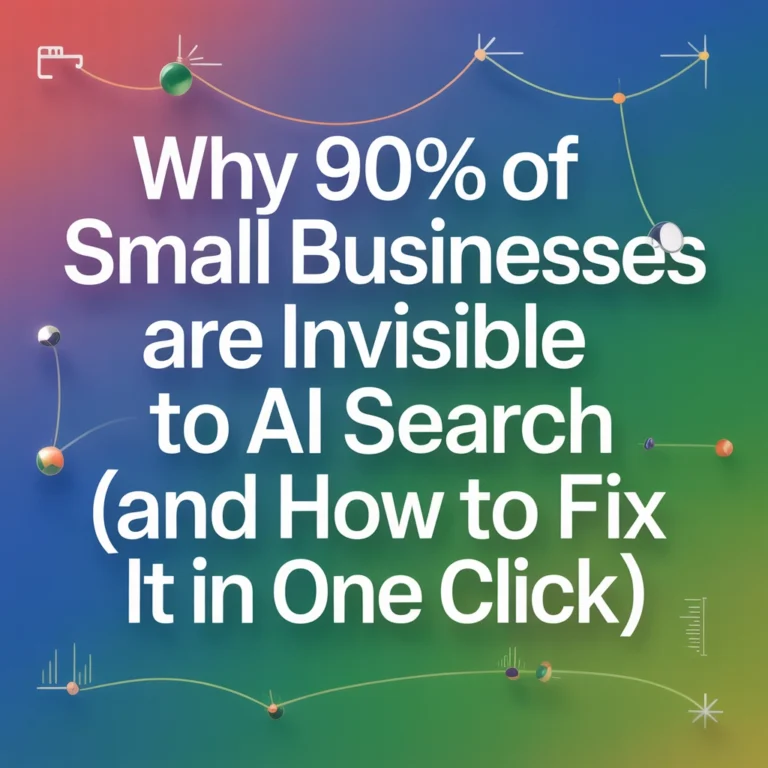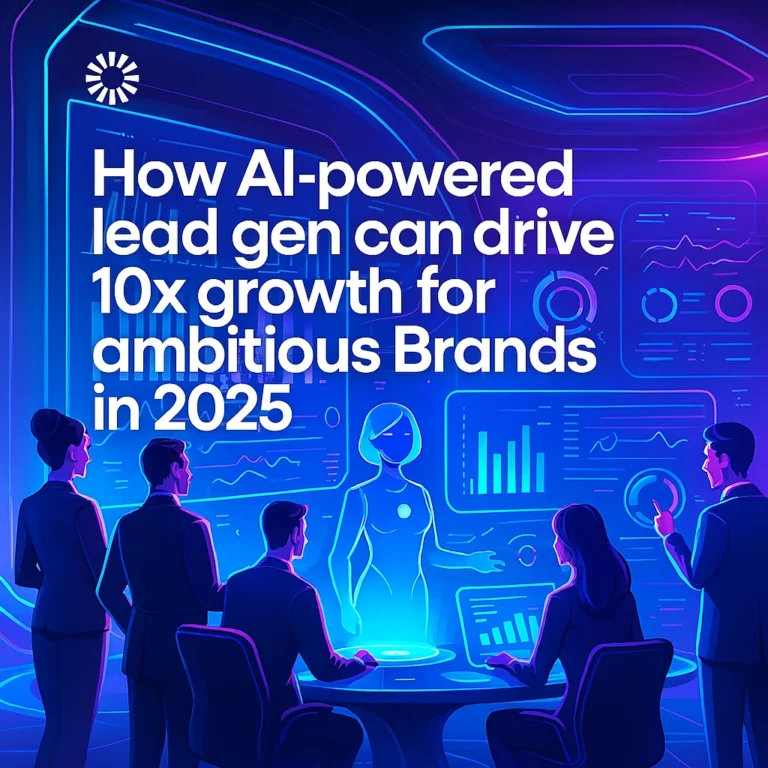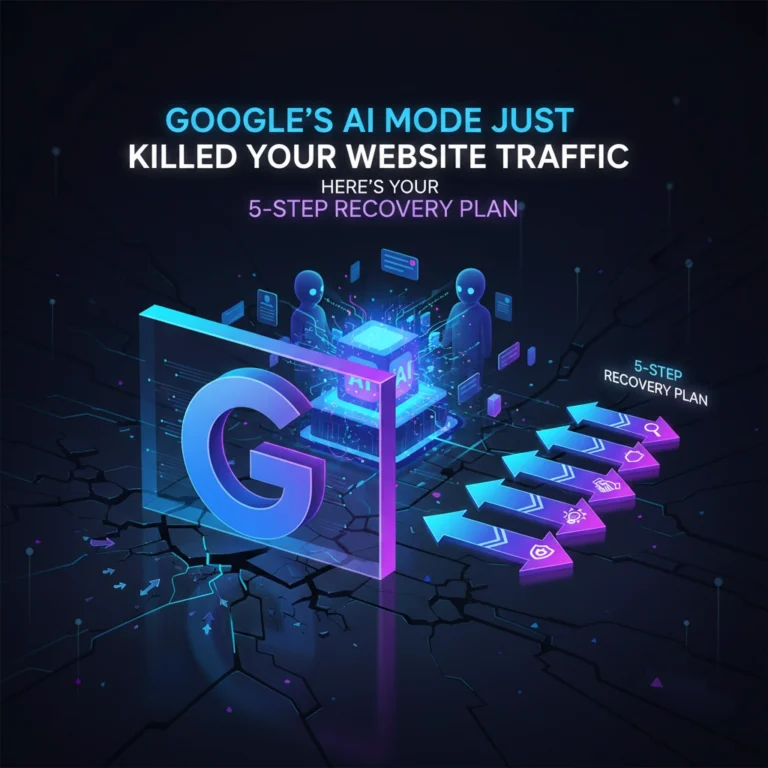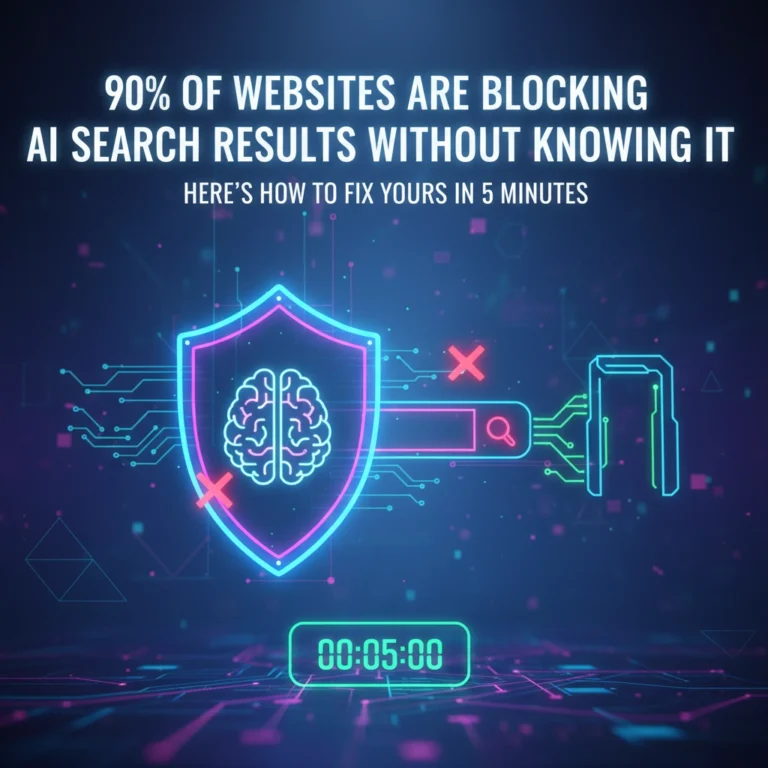Survival Guide 2025: How to Make Your Brand Visible in an AI-First Search World

Fall interactions and outputs need
The digital landscape has made a radical leap in 2025. With AI-powered search experiences at the center, how consumers find brands, solutions, and products is fundamentally different from just a year or two ago. If your brand isn’t factoring AI-powered discovery into every facet of its visibility strategy, you’re already a step behind.
Gone are the days when being #1 on Google was the finish line. Today, conversational LLMs like ChatGPT, Claude, and Perplexity deliver direct, cited answers, and Google’s AI Overviews summarize what matters before most people ever see a single link. Clickthrough rates across the board have dropped by up to 70%, but there’s a silver lining: the traffic you do get is far more qualified, as users have already engaged in meaningful inquiry about your brand or product.
So, what does it really take to survive—and thrive—in this new search frontier?
Understanding the New Search Reality
AI search engines and conversational assistants now combine real-time web crawling with massive knowledge bases, surfacing brands and solutions in response to context-rich, conversational queries. These systems reward clear, authoritative answers to natural language questions—not keyword-stuffed content or static lists of links.
Brands now compete for presence, authority, and influence in AI-powered responses, not just for clicks. Your goal: Make your brand the go-to source that AI systems cite for answers in your domain.
Core Survival Strategies
Embrace Conversational Content Architecture
Today’s AI platforms mimic the way people talk and ask questions, so your content needs to do the same. Think about the specific problems your ideal customer might verbally describe to an AI tool—and answer those questions using natural, conversational language.
- Anticipate long-tail, intent-driven questions
- Write content to directly (and succinctly) answer those queries
- Avoid jargon in favor of clarity and conversational tone
A useful exercise: brainstorm 10-20 real customer questions about your offering. Then create or optimize resources on your website to answer those exact questions, using clear headings and structured responses. 
Build Semantic Authority
It’s not just about volume or keyword density anymore. AI search leans hard on topical relevance and semantic depth. You want to build “topic clusters”—blogs, guides, resource pages, and case studies interlinked and focused around your core themes.
- Create pillar pages for major topics your business covers
- Link out and interconnect to related subtopics and supporting content
- Refresh your content regularly to reflect new developments and trends
Why does this matter? Because interconnected, semantically strong content signals expertise to AI models and increases your chances of being cited in answers across platforms.
Establish Entity Consistency
AI models rely on structured knowledge graphs and entity recognition to make sense of brands and organizations.
- Make sure your company and product names are standardized across all external databases: Wikidata, LinkedIn, Crunchbase, business directories, and your website.
- Use the same taglines, product names, and descriptions everywhere you appear.
- Keep your organizational schema markup up to date on your site.
This helps LLMs and search engines clearly “see” who you are, so your expertise and identity carry over in their responses.
Technical Optimization Essentials
Master Structured Data Implementation
Platforms like Schema.org aren’t optional—they’re essential. Use structured data to mark up:
- FAQs
- Product details/specs
- Reviews and testimonials
- Organization and team information
Proper use of schema markup helps both search engines and AI tools extract the most relevant information about your brand, leading to more accurate and authoritative citations. 
Optimize for Question-Based Queries
Organize your website around the questions your audience is most likely to ask. Include robust FAQ sections, use question-based H2s and H3s, and ensure each page answers at least one high-intent query.
- Build content specifically for “how,” “what,” “why,” and “best” queries
- Embed clear, logical pathways for AI tools to extract and cite your content
Maintain Essential SEO
Traditional on-page SEO is still the bedrock for AI discoverability:
- Fast site speed and mobile responsiveness
- Clear, concise metadata
- Well-structured site navigation and internal linking
AI models rely on optimized, crawlable content—the fundamentals matter more than ever.
Content Strategy for AI Discovery
Create Prompt-Friendly Content
LLMs are essentially “copy-pasters” from trusted sources. Help them help you:
- Summarize key answers at the start of articles or sections so LLMs can easily quote you
- Use bullet points and bold text for key takeaways
- Avoid burying the lead—if it’s important, say it upfront
Leverage Interactive and Immersive Formats
As audience expectations grow and technology evolves, static long-form content won’t cut it for ahead-of-the-curve brands.
- Develop interactive guides, calculators, or AR experiences
- Use multimedia—videos, infographics, data visualizations—to make your expertise easier to digest (and more likely to be cited by AI systems)

- Test immersive formats like live demos or micro-sites for new product launches
Develop AI-Augmented Content Workflows
Use advanced AI tools for:
- Ideation and first-draft content generation
- SEO and prompt optimization analysis
- Predicting new audience interest and queries
But don’t automate at the expense of authenticity—retain human review for voice, brand fit, and storytelling.
Measurement and Tracking
Redefine Success Metrics
With less focus on sheer clicks, you must redefine what “winning” looks like:
- Brand presence and frequency in AI platforms (are you cited often?)
- Quality of traffic (do users arrive with clear intent and convert?)
- Depth of engagement (are people spending time with your resources?)
Use web analytics alongside specialized platforms like Rank Prompt to monitor AI visibility and brand mentions where possible.
Implement AI Visibility Tracking
- Regularly check how your content is referenced by ChatGPT, Claude, Perplexity, and other major LLMs
- Investigate branded citations in AI Overviews and other knowledge panels
Monitoring your “AI footprint” is crucial to understanding your reach—and where you can improve.
Monitor Citation Patterns
Study which content pieces are being cited and in what context. This helps you:
- Identify winning formats (FAQ? Guides? Explainers?)
- Double down on topics where your brand leads the narrative
- Adjust content production priorities for future wins
Future-Proofing Your Brand
This landscape will only become more competitive and complex. Brands who see AI search as their next big marketing frontier and invest today will reap outsized rewards as others scramble to adapt.
Here’s your year-ahead quickstart:
- Audit your current visibility in top AI-powered search tools
- Update brand mentions and schema across your digital footprint
- Build (or optimize) conversational, question-first content clusters
- Explore immersive and interactive formats to stand out
- Track your citations and iteratively adjust your strategy
Above all, remember: the AI-first world is a quality game, not a volume game. A smaller number of highly engaged, intent-rich visitors are far more valuable than random, unqualified clicks.
By embracing these AI-first optimization principles—and making them part of your day-to-day playbook—you’ll not only survive 2025, but set your brand up to lead in the years ahead.
Ready to level up your AI visibility? Explore how Zentara’s AI SEO services and digital marketing expertise can accelerate your journey. Need tailored support? Our consulting team is here to help.






